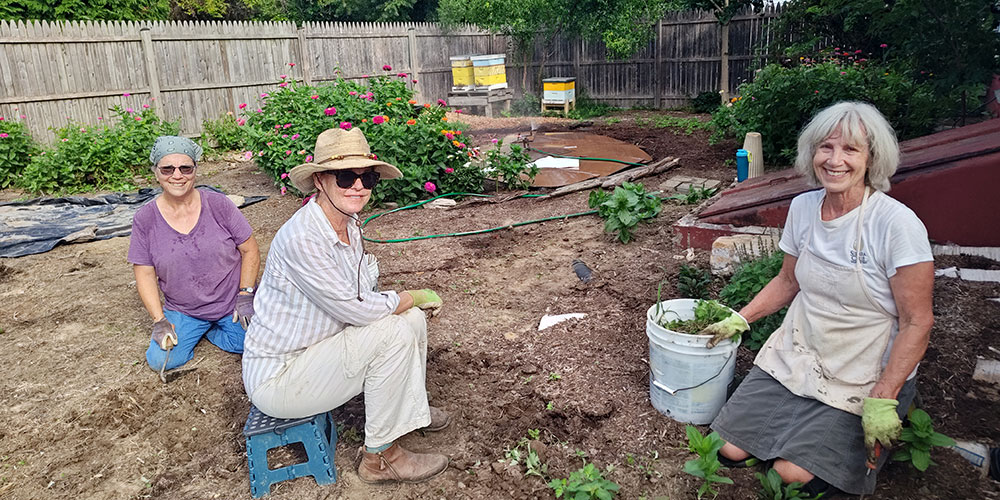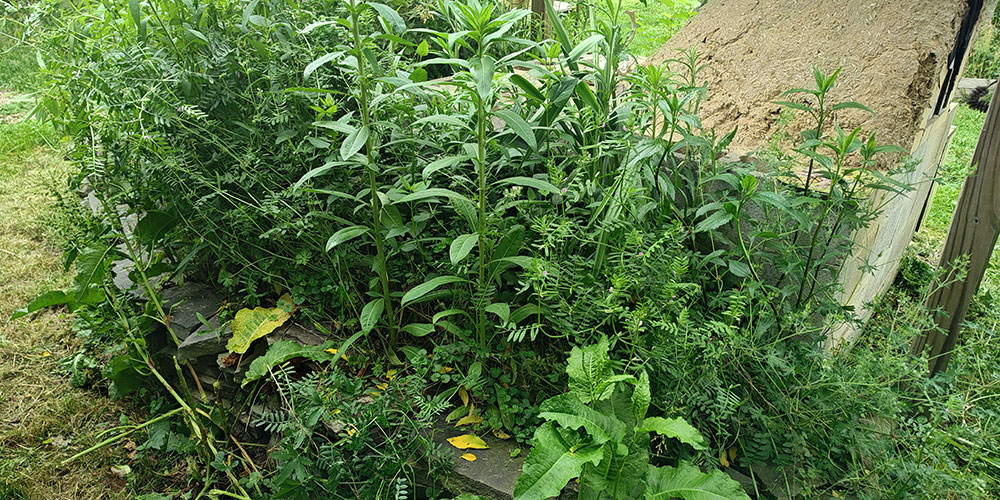Adopt-A-Plot
Help our community garden flourish! No gardening expertise necessary to help out — this is a lifelong learning program for all levels of experience!
Learn about each of the spaces below and contact the Garden Club president to get started volunteering!
Plot #1: Annual Veggie Beds
In a south-facing suntrap designed to create a heat island to extend the growing season, garlic, strawberries, and annual crops are produced in veggie beds and an inverted mulberry stump.
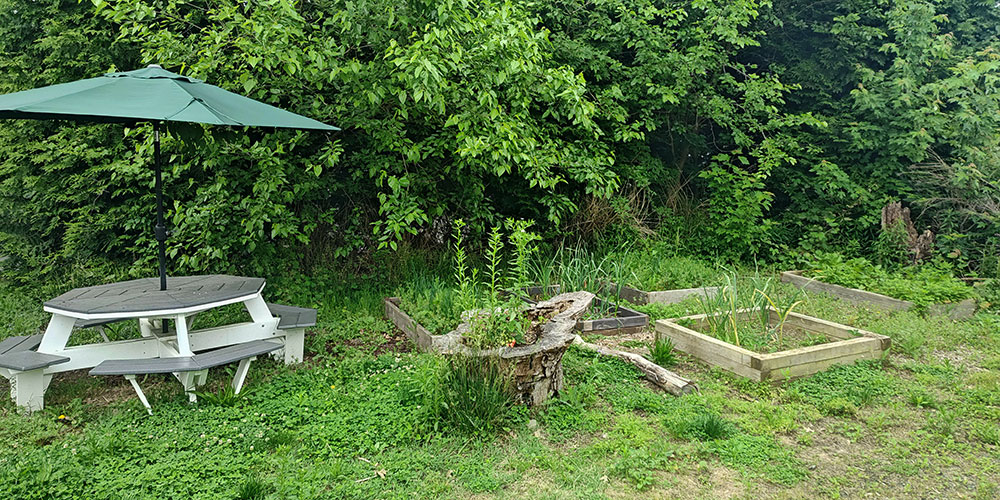
Plot #2: Poetry Garden
In this medieval-inspired outdoor classroom built with the Department of English, medlar, fig, raspberry, almond, currants, daisies, and more are grown in raised beds that double as seating and standing desks.
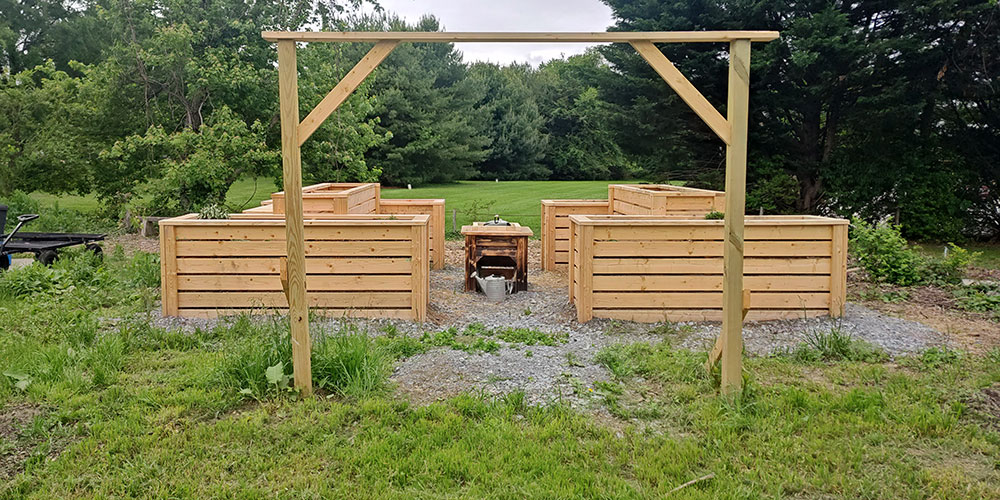
Plot #3: Seaberry Fedge
A food hedge or "fedge" functions as a windbreak for our chicken flock. Nitrogen-fixing sea buckthorns ensconce a rare specimen of native bamboo. The key to this space: corralling the mugwort used in herbal beverage preparations by students.
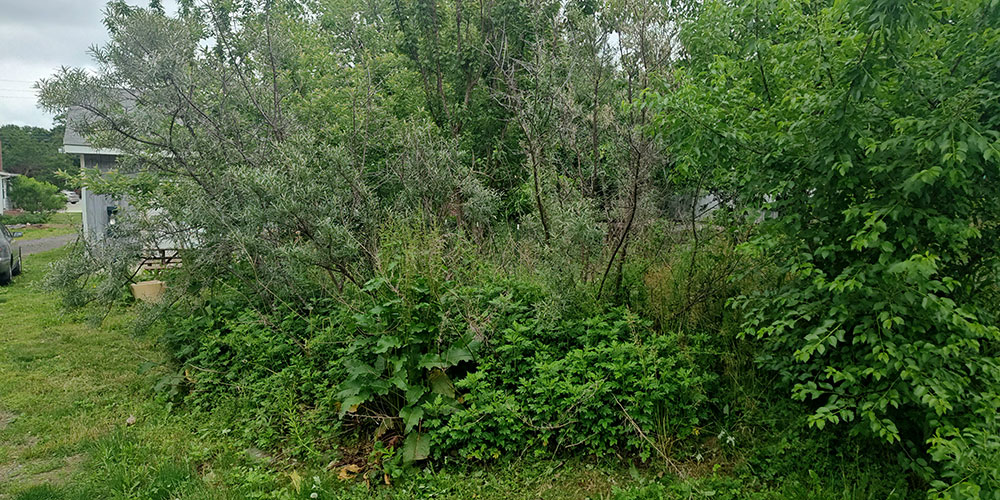
Plot #4: Compost Bays
Get your core workout on by helping to build up and beautify our aerated static compost system, which uses comfrey as a decomposition accelerator.
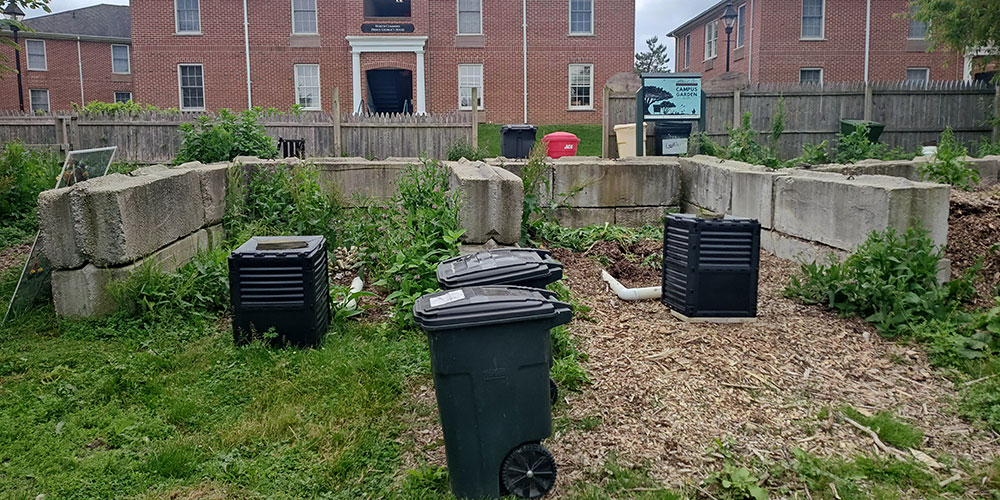
Plot #5: West Entrance Terrace
Create space for comfrey, horseradish, and beach plums on rock-wall beds built into the hillside. Redbud and jujube trees offer edible flowers and fruits in proximity.
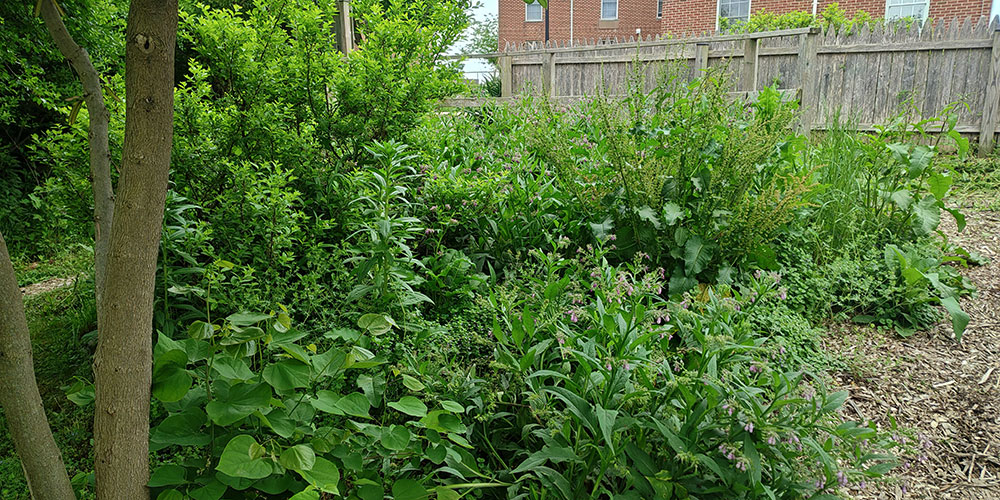
Plot #6: Drive-Thru Compost Dropoff
Improve access and aesthetics of our organics recycling access point, which features anise hyssop, milkweed, and an in-ground composting worm bin.
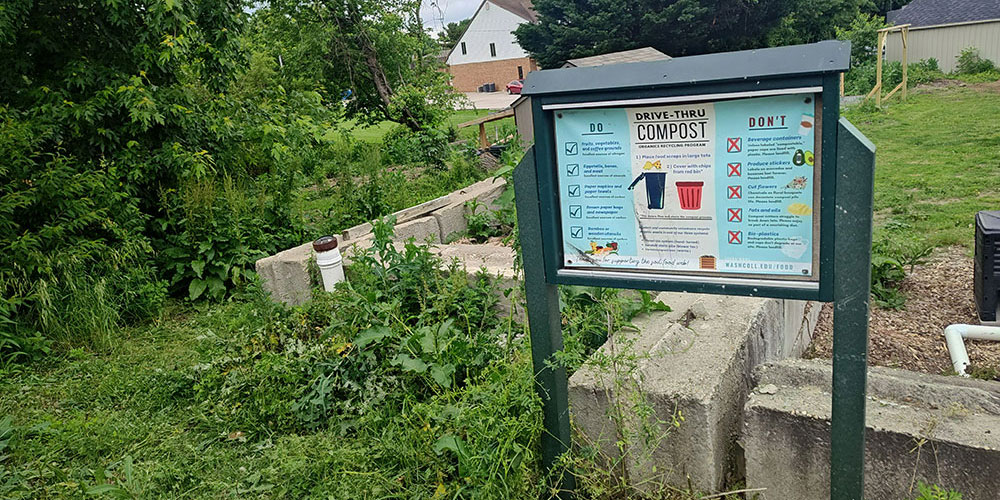
Plot #7: Hazelnut Hideaway
Hazelnuts and chinquapins provide an abundant source of fall proteins while a chaste tree screens the industrial infrastructure of the adjacent property. A cider apple tree grown from seed by a student in Minta Martin Hall awaits recovery from opportunistic asters.
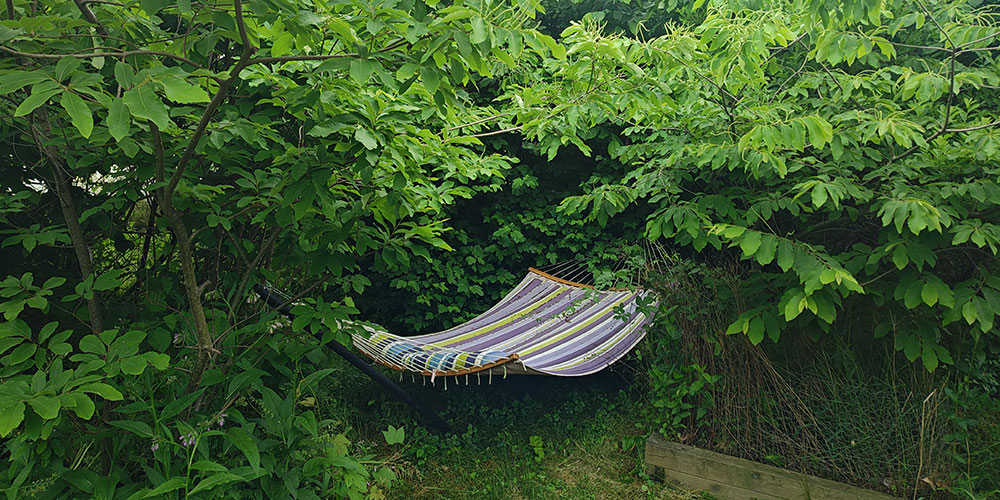
Plot #8: Earth Oven Beds
Passionflower, evening primrose, and goldenrod are prized native herbals, Muscadine grape climbs the scaffolding of the cob oven's living roof, which cradles several species of sedum basking in sunny seclusion.
Plot #9: Herb Spiral
Adjacent to the earth oven is a rock spiral packed with culinary herbs arranged through the sloped mound based on sunlight and water needs. Spearmint, lavender, thyme, chives, and several other aromatics are used on earth oven pizzas and as ingredients in the annual Oktoberfest celebration.
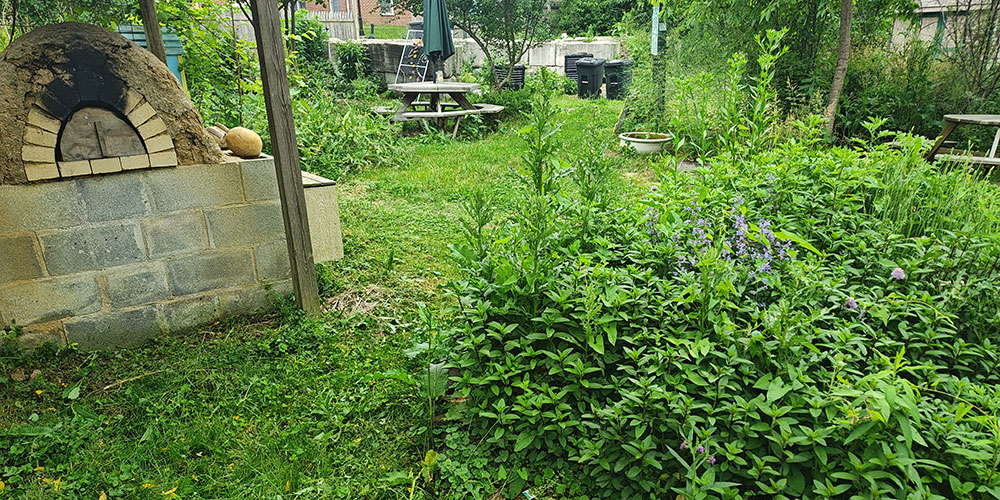
Plot #10: Frog Pond
Practice rockscaping in the shade of pear, peach, nectarine, and mulberry trees that provide dappled light for our pond. With two waterfalls, it's the preferred water source for wild birds, bees, and our own chicken flock. Aquatic plants of interest include juncus, pickeral rush, mare's tail, hornwort, lizard's tail, and bacopa.
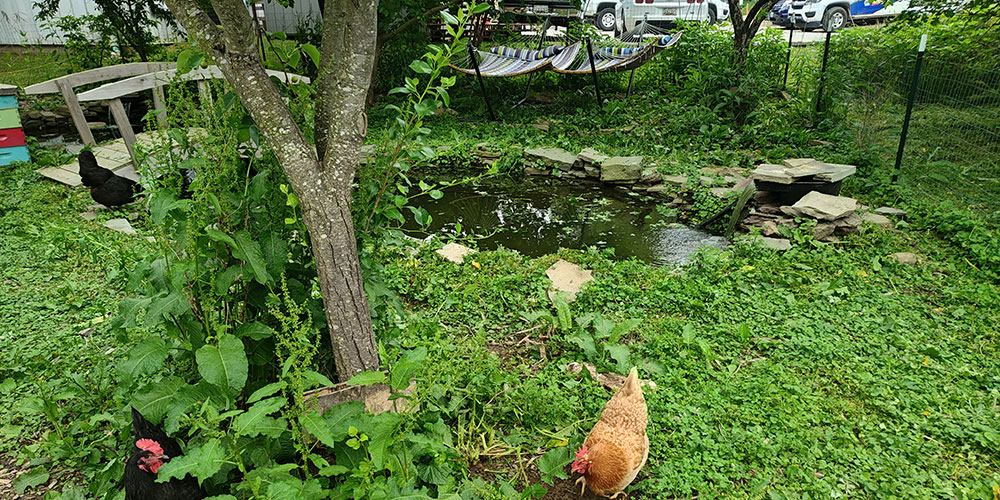
Plot #11: Forest Garden
The most established part of the Campus Garden features mature apple trees, as well as pear, plum, goumi, paw paw, American cranberry bush, Kentucky coffee tree, elderberry, nettle, plantain, vervain, horsetail, daylily, and cutleaf coneflower. It's home to eight gregarious chickens who are eager to assist in projects.
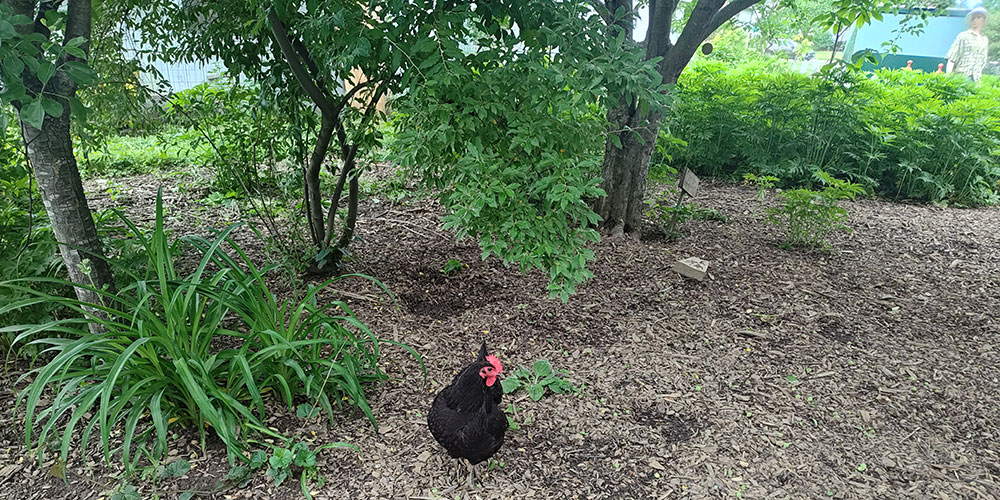
Plot #12: Art House Garden and Apiary
Team up with local Master Gardeners in cultivating a rain garden bordered by jujube, ginkgo, ninebark, golden Alexanders, and cutleaf coneflower. Or, suit up and join student and staff beekeepers in inspecting and supporting our colonies of honeybees.
